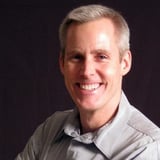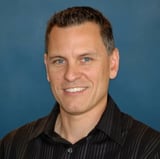Log in or create a free Rosenverse account to watch this video.
Log in Create free account100s of community videos are available to free members. Conference talks are generally available to Gold members.
Summary
Join us for this session with Sean McKay, Founder, Product Strategy & Design Consultant at Whole Product Thinking. Why is it so hard to align everyone so we can deliver products that our customers love? It’s a question that will steal your soul (and your job) if you let it. I believe it’s more important now than ever that we transcend the nagging industry debates, power struggles, and process wars that are blocking us all from doing our best work for our customers. In this session, I’ll share a new “Whole Product Thinking” framework I’ve been developing. It’s intended to help structure conversations and align teams around the fundamental concepts needed to deliver human-centered products that are meaningful to users and effective for business. My approach centers on the 'what' and 'why,' deliberately separating the 'how' to allow organizations the freedom to choose approaches and methods that align with their unique contexts, development philosophies, and company culture.
Key Insights
-
•
Whole product thinking integrates business, problem, and reality spaces for holistic product delivery.
-
•
Shared language and alignment documents help teams overcome communication silos and contradictory perspectives.
-
•
Decision culture and business stage significantly impact how product strategy and investments should be approached.
-
•
Customer outcomes and business impacts must be simultaneously considered for successful products.
-
•
Continuous understanding blends strategic exploration and tactical evaluation to maintain customer connections.
-
•
Product operations—including research ops, design ops, data ops, and customer success ops—are critical as binding infrastructure.
-
•
Delivery is as important as design and development, emphasizing incremental releases and deployment planning.
-
•
Design principles like accessibility and sustainability are folded into business values and solution design, not separate add-ons.
-
•
Avoid prescribing rigid roles; instead use the framework as a diagnostic tool to identify gaps and align cross-functional teams.
-
•
An experience vision acts as a north star, inspiring teams toward long-term customer-centric outcomes beyond fixed product features.
Notable Quotes
"Frameworks are the best because they help structure conversations and align teams."
"Everyone has a different context—teams, culture, and history—that shapes how they work and think."
"Is there good kung fu in everything? Every perspective has something to teach us."
"Outcomes is a word people use so much it's lost its meaning, so we need clarity around it."
"Business space includes vision, mission, market understanding, business model, and decision culture—not just product."
"Reality space focuses on customers’ mental models, appetite for change, and the broader solution ecosystem."
"Continuous understanding means both strategic and tactical research with strong customer connections."
"Delivery gets missed at the right time often; sequencing, deployment, and adoption planning are critical."
"Product operations serve as the binding agent to enable teams and processes to work seamlessly together."
"Experience vision is the north star describing what the customer’s world will be like after success."
Or choose a question:
















More Videos

"After the move, our work had more impact, more visibility, and we're present across the entire product life cycle."
Nalini KotamrajuResearch After UX
March 25, 2024

"The end of history illusion is that we think we're done evolving, but we vastly underestimate future change."
Dean BroadleyNot Black Enough to be White
January 8, 2024

"Designers are change agents. This is part of your passion and what gets you up in the morning."
Denise Jacobs Nancy Douyon Renee Reid Lisa WelchmanInteractive Keynote: Social Change by Design
January 8, 2024

"Reporting progress with data and stories opens up opportunities with stakeholders and builds credibility."
Kim Fellman CohenMeasuring the Designer Experience
October 23, 2019

"Every major brand has a dark side brought to you by design on purpose, 40 hours a week."
George AyeThat Quiet Little Voice: When Design and Ethics Collide
November 16, 2022

"Sometimes alignment work isn’t enjoyable, but it’s part of the job for design system success."
Nathan CurtisBeyond the Toolkit: Spreading a System Across People & Products
June 9, 2016

"Platforms need researchers and designers to make them meaningful and intentional for the people they are designed to serve."
Greg PetroffThe Compass Mission
March 10, 2021

"We have this collective superpower navigating the breadth and depth of human experience across cultures."
Chloe Amos-EdkinsA Cultural Approach: Research in the Context of Glocalisation
March 27, 2023

"85% of people were leaving after viewing only one page, showing severe bounce issues."
Mackenzie Cockram Sara Branco Cunha Ian FranklinIntegrating Qualitative and Quantitative Research from Discovery to Live
December 16, 2022
















